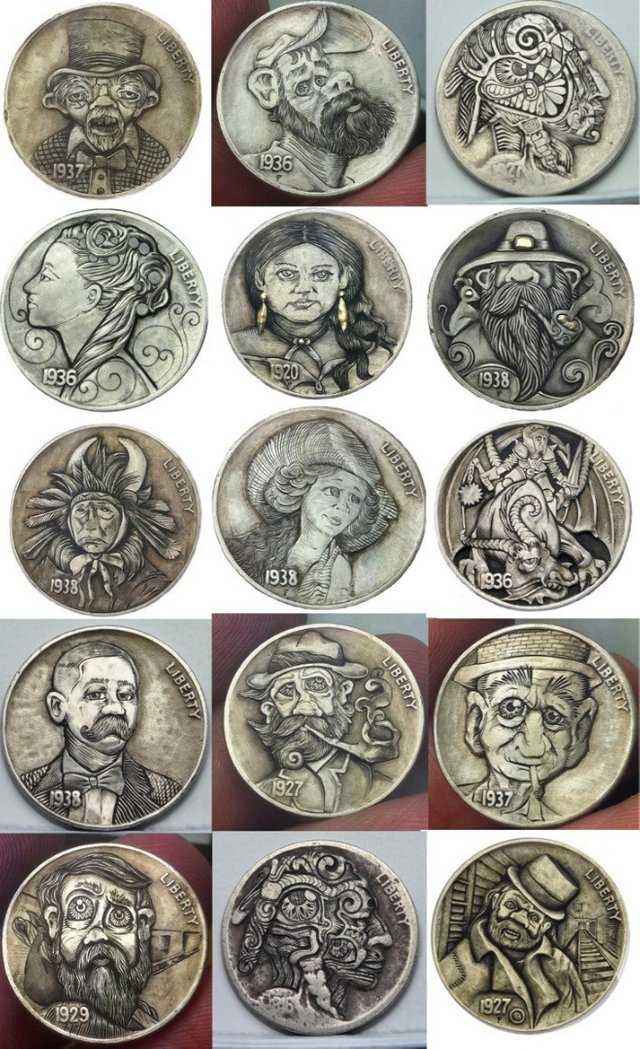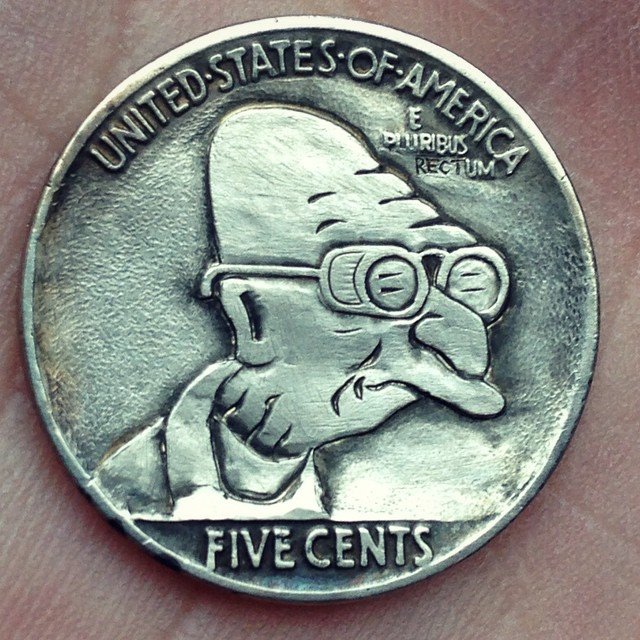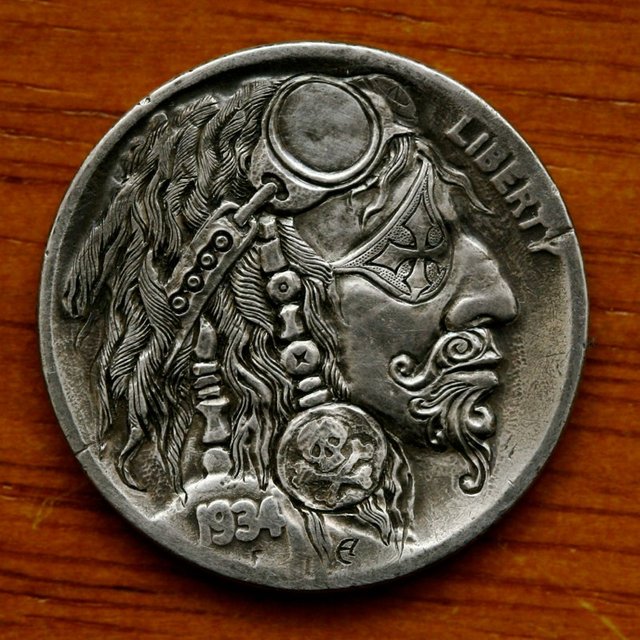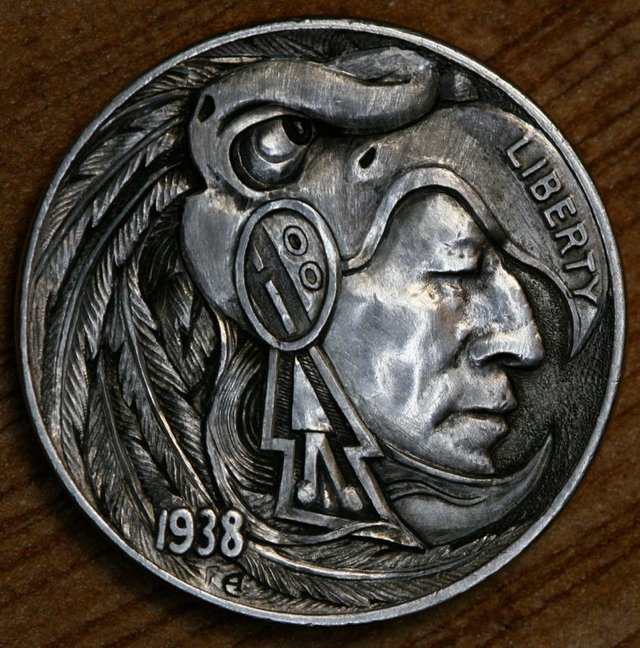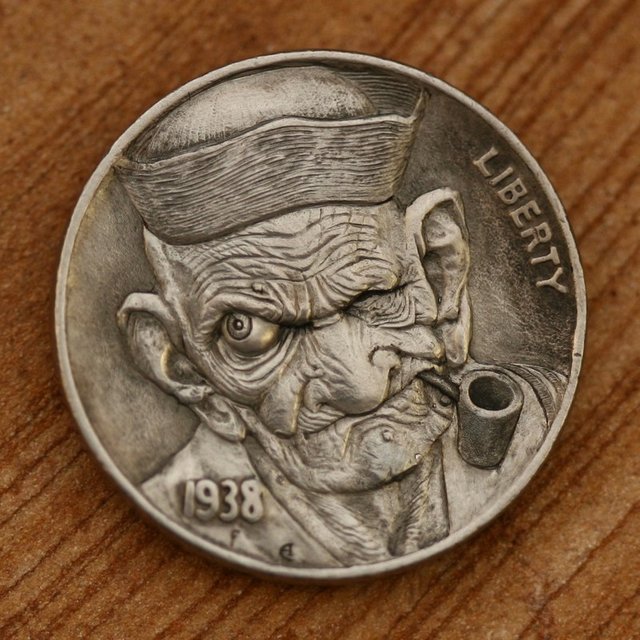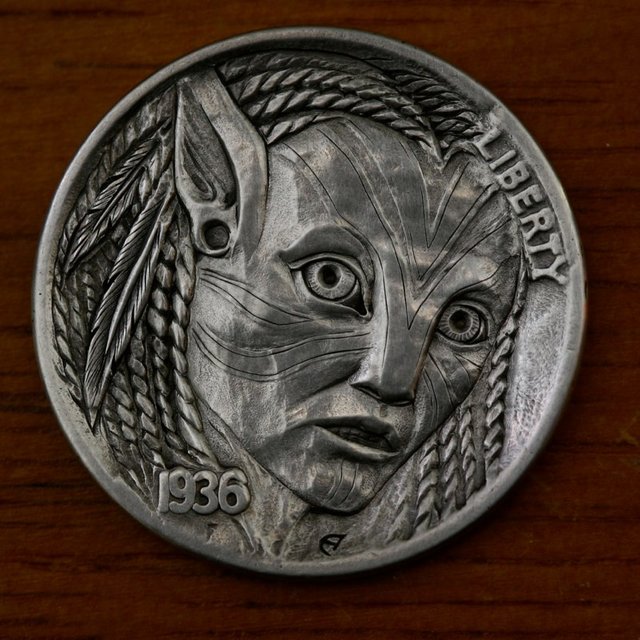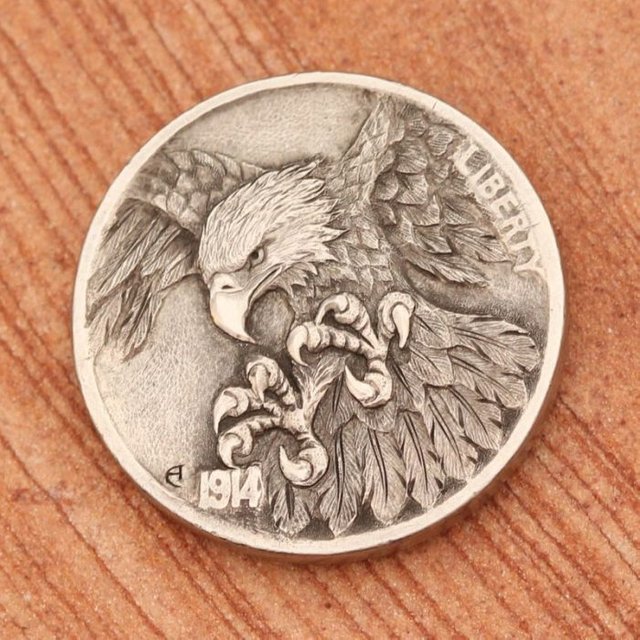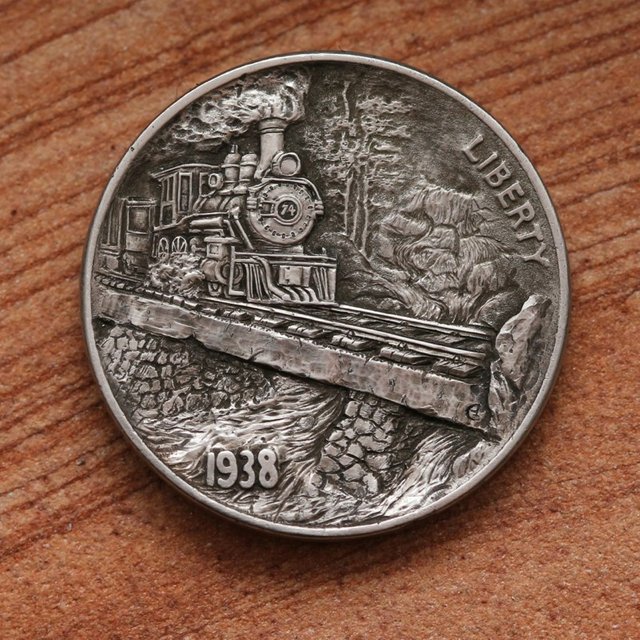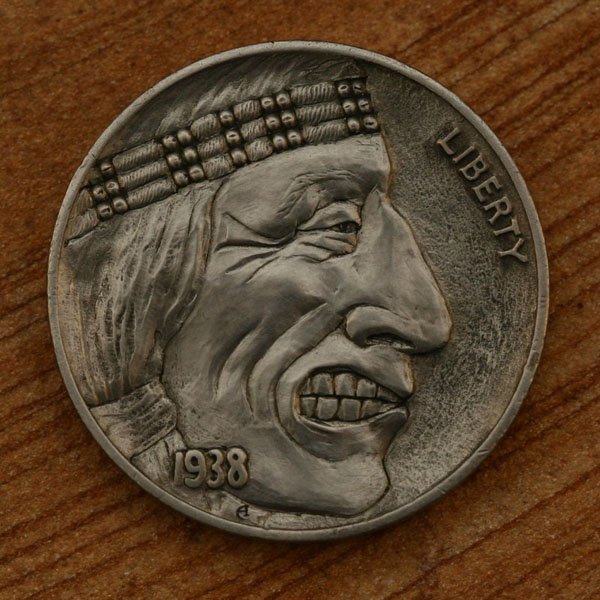Hobo Nickel (Coin thread)
The hobo nickel is a sculptural art form involving the creative modification of small-denomination coins, essentially resulting in miniature bas reliefs. The US nickel coin was favored because of its size, thickness and relative softness. However, the term hobo nickel is generic, as carvings have been made from many different denominations. Due to its low cost and portability, this medium was particularly popular among hobos, hence the name.
The altering of coins dates to the 18th century or earlier. Beginning in the 1850s, the most common form of coin alteration was the "potty coin", engraved on United States Seated Liberty coinage (half dime through trade dollar) and modifying Liberty into a figure sitting on a chamber pot. This time period was also the heyday of the love token, which was made by machine-smoothing a coin (usually silver) on one or both sides, then engraving it with initials, monograms, names, scenes, etc., often with an ornate border. Hundreds of thousands of coins were altered in this manner. They were often mounted on pins or incorporated into bracelets and necklaces. The love token fad faded out in the early 20th century; love tokens engraved on buffalo nickels are rare. During this time period, hobo-style coin alteration could be found outside the United States, primarily in Britain, France, and South Africa.
